








First Plane to Fly in Winfield, Kansas
Alvin K. Longren at the Winfield, Fair Grounds in 1911
The centennial issue of the Winfield Courier of February 24, 1973 has a picture of a Longren airplane. The text states that it was the first airplane to land in Winfield and the date was 1911. The picture was courtesy of the Kansas State Historical Society. It is a pusher type with two wings and an open cockpit.
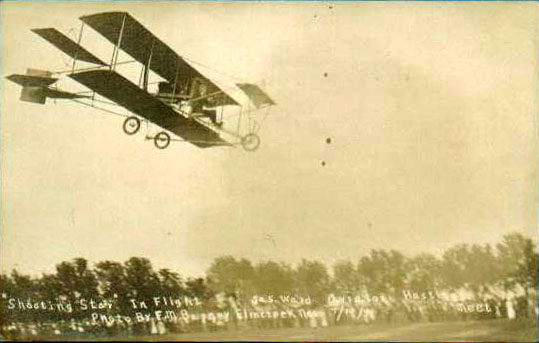
Winfield Courier, November 9, 1911. A real aviation exhibition will be given in Winfield on Wednesday, Thursday, and Friday, November 22 to 24 under the auspices of the Retail Merchants Association of this city. A contract to that effect was signed up Wednesday afternoon by F. H. Barlow, of Clay Center, representing the Young Aviation Co., of Topeka. The company guarantees to send a flying machine that can fly and aviators who are not afraid to fly. The entertainment will be provided by the merchants of Winfield according to details that will be announced later. Mr. Harlow was here several days working up the plans for the exhibition, and talked with nearly all the business men on the subject. The Association held a meeting Wednesday afternoon to finish up the business.
Winfield Courier, November 20, 1911. The people who are interested in aviation will be delighted to learn that Alvin K. Longren has been engaged by the Merchants Association of Winfield to give a series of his inimitable flights at the fair ground November 22, 23, and 24.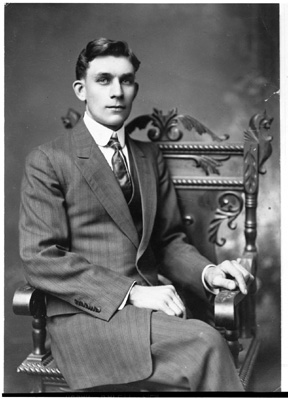
`Too much praise cannot be accorded Mr. Longren's achievements as an aviator and ever since his spectacular flight at the Kansas state Fair at Topeka when he sailed majestically over the city, to the astonishment of the entire populace, his flights have been marked with such inevitable satisfaction to the public wherever he has appeared, the his name has become a synonym of successful aviation.
Too much stress cannot be placed on the superiority of his machine which has been constructed with a view to strength, power and speed regardless of expense and it is undoubtedly true that there is no machine in the country today that so completely fulfills all the requirements in these respects, as the magnificent machine in which the young Kansas //////////here/////the days mentioned.
Winfield Courier, Thursday November 23, 1911. A heavy rain between four o'clock and six yesterday afternoon prevented Aviator A. K. Longren from going up at the appointed time. A car load of spectators, and a number of automobiles were disappointed by this condition of things, but there was no help for it.
Mr. Longren has a machine that can fly, whenever conditions are halfway favorable. Except for the rain at the wrong time, yesterday was an ideal day. It took so long to set up the machine and put it in working order that it was not ready at the best time of the afternoon, about three, when the wind was down and the air was heavy. To avoid delay of having to set up the machine, the aviator is contemplating making his next town, which will be Blackwell, by flying from here there, saving a lot of work and trouble of taking the biCplane apart and setting it up again.
This machine is as different from that which was here in the summer as is a watch from a road roller. Every part is of the finest mechanical workmanship; the material of the best. The engine is an eight cylinder, sixty horse power motor, nickel plated and as clean as a new dollar. Conditions this afternoon are regarded as favorable for a flight, and it will probably take place.
Mr. Longren said this afternoon that if the wind fell a little he would go up.
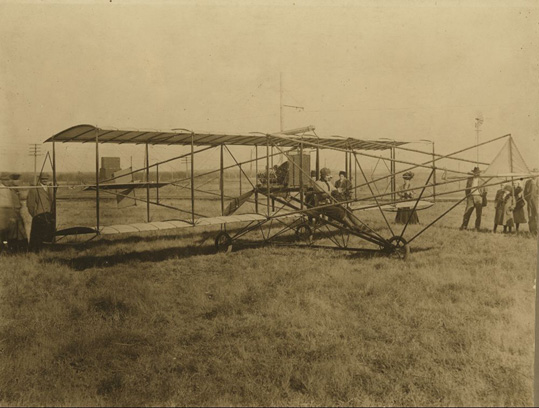
Winfield Courier, Friday, November 24, 1911. It was a beautiful flight over the bottoms of the Walnut west of town Thursday. Aviator A. K. Longren made good his claim to being a bird man. The flight was late, as the wind had been high and baffling most of the afternoon. About five o'clock it had become a little steadier, but was still such that nearly all the spectators dreaded to see him start. But the plucky aviator determined to try it anyway, for a short flight at least.
As a test of his motors and the condition of the wind, he first made a ground run of about two hundred yards and took the air for a lift of about ten feet. Landing, he carefully inspected and tested the machinery, and then went for a real flight. Sailing northward, he ascended about two hundred feet, flew over Winfield Junction, the Walnut river, the fair ground and Hiatt's park, and made a neat landing on the ground from when he started.
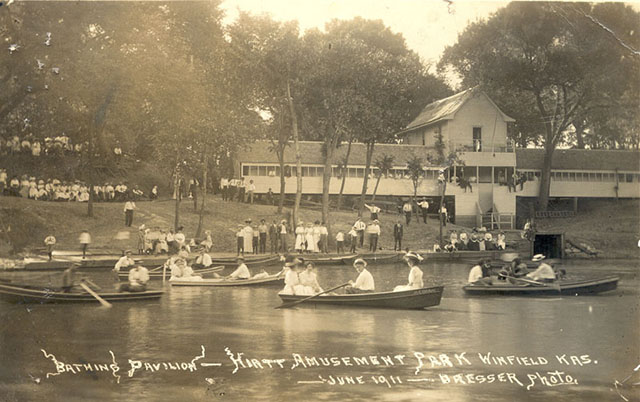
Hiatt Amusement Park in June 1911.
About a hundred people were present, most of them staying out in spite of the cold, from about three o'clock. But everyone expressed complete satisfaction with the exhibition, considering that the show had well repaid the long wait in the cold. The wind was still so strong at the time the machine was brought out of the hanger that no one of the spectators would have asked that the flight be attempted. Many expressed opposition to him starting. But Longren was determined that he would show he is able and willing to fly. He stated that the danger in such a wind was not so much in the actual flying, but in the danger of alighting; when the power is shut off the wind has control of the machine.
He will remain here tomorrow, and if the weather is favorable at that time he will make a flight at two o'clock. Also, if the weather is good, he expects to fly from here to Blackwell Sunday.
Winfield Courier, Saturday, November 25, 1911. Two thousand feet up in the air sailed Aviator Longren at Hiatt's Park, Friday afternoon, and made a repetition of the feat Saturday afternoon. Two thousand spectators witnessed this spectacular flight, but only two hundred of them paid to see it. Among those on the outside were many in carriages and autos, people abundantly able to pay the small fee charged to encourage a skillful and daring man to make this amusement for the populace.
The road and the field at the top of the hill were black with the crowd that preferred the dictates of a torturing thrift to the prompting of that spirit of fairness that would give every man the right reward of his labor. Some of this crowd of "T.W.'s" even had the impudence, when appealed to, to either pay or "fade away," to jeer and hiss at the man upon whom was the expense and risk, and call out, "Coward, Coward!"
As a measure to some what wipe out the disgrace to the community that such shabby treatment of a brave and manly gentleman can but be regarded, the officers of the merchants association Saturday morning circulated a subscription paper to raise a purse for the aviator. This resulted in a collection of $143.50, which will help a little toward the running expenses. The committee also circulated this hand bill.
"Friday's exhibition was the grandest exhibition ever given in Southern Kansas. Mr. Longren reaching an altitude of 2000 feet and flying a distance of ten miles. Two thousand people witnessed this wonderful flight with only 200 paid admissions. Let's reverse the ratio today and protect Winfield's fair name. S/ Committee."
It was nearly five o'clock before the aviator was in readiness to make the start, some time having been consumed in trying vainly to persuade the crowd that the fair thing to do would be to pay in or get out. He made the run to the south, and took off for the flight after a good ground run of about a hundred yards. Then he rose easily and rapidly into the air, soon mounting to the maximum height. His course was laid on a great oval extending south, west, and north of the park, embracing a perimeter of about five miles. This he traveled twice, being in the air thirteen minutes. His alighting was as easy and graceful as that of a great bird. When in the air he was plainly visible to people down town.
His first flight Saturday afternoon was made at 2 o'clock in the presence of an immense crowd. The paid admissions were much more numerous than the were the day before, but the bigger part of the audience was on the outside. To the credit of some of the "T.W.'s" [I belive this means Tight Wads] of the day before, be it said, that they contributed liberally to the purse raised by the merchants.
The aviator expects to fly to Blackwell tomorrow.
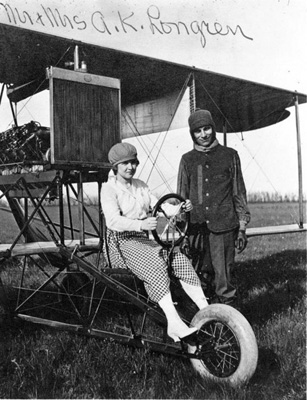
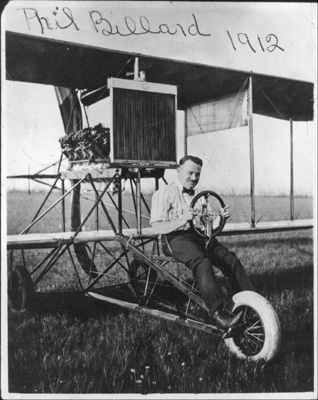
The pictures above show a new version of the plane in 1912. The canard in the front is eliminated and there is a bigger white wheel on the landing gear.
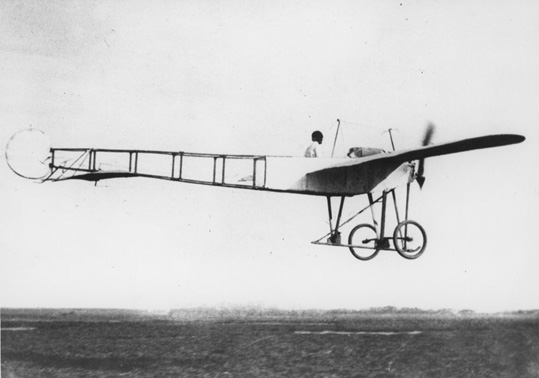
Above is Clyde Cessna in his Silverwing flying in May 1911 in Oklahoma. Cessna was the first Kansas to fly, but he did it outside of Enid, Oklahoma, and thus gave that title to Lundgren.
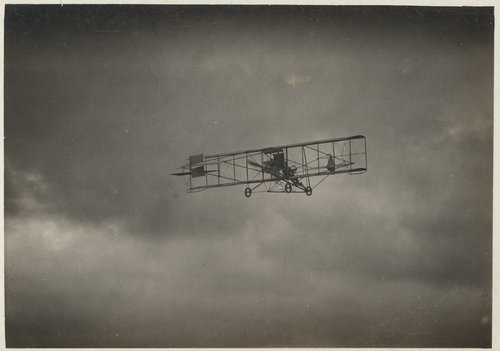
Albin K. Longrens First Flight - September 2, 1911.
ARTICLE TAKEN FROM THE WICHITA EAGLE, SUNDAY, AUGUST 4, 1996, WHICH APPEARED ON PAGE 26A.
[PICTURE OF AIRPLANE WITH WINGS FOLDED. CAPTION STATES:
"Albin K. Longren's 1921 fold-wing airplane, the wings of which could be positioned for flight in about 30 seconds."
TOPEKA AVIATION PIONEER IS NEARLY FORGOTTEN NOW.
Retired minister wants to see Albin K. Longren's flying machine take flight again.
By John Hanna. Associated Press.
TOPEKA. A small crowd gathered in a farmer's field on the outskirts of the Oakland neighborhood in the northeast part of town. A stunt pilot was going to test Albin K. Longren's newest flying machine, built in the old woolen mill nearby.
At that time, in 1921, this plane was really something. It had a clean fuselage made of vulcanized fiber, and a pilot and passenger could sit side by side on a buff leather seat.
But its wings represented the biggest innovation. If you removed a set of metal pins on each side, you could fold them back along the body, so that the machine would fit in your garage.
The pilot, J. Hodgins Smith, took off and executed spins and barrel rolls, doing everything, it seemed, except straight flying. After he landed, he said, "That is the best machine I ever saw."
Had Longren been a better businessman, he might have become as famous as aviation pioneers Clyde Cessna or Walter Beech, and Topeka might be a center of light aircraft manufacturing. Instead, he and his "flivver" were all but forgotten for years.
Now, the Rev. Richard Taylor, a retired Methodist minister and history buff, hopes to see Longren's fold-wing flyer take to the air again. The 75th anniversary of its first flight is Tuesday.
"This thing was revolutionary," Taylor said. "He thought this could be the plane for the ranch man, the traveling salesman, the doctor."
Taylor wants to find and restore a Longren fold-wing plane, or even build a replica if he can find the money. He plans to put together a guide so that people can see the places where Longren built and flew his aircraft.
The minister, the former head of the state's leading temperance and anti-gambling group, has spent nearly two decades researching Longren's life. He has compiled a book of clippings and pictures about the aviator, which he sells for $10-the cost of producing it. He has applied to the state Aviation Hall of Fame to get Longren's name included.
He has scheduled a historical pageant for 2 p.m., Aug. 10, at Hetrick Hangar at Billard Airport, with local residents taking on the roles of people who were present on Aug. 6, 1921, or who figured prominently in other episodes of Longren's life. Billard is near the field where Longren flew his fold-wing.
Taylor also plans to put up a sign southeast of Topeka, near the spot Longren flew his first planeCand completed the first successful flight of a Kansas plane in the stateCon September 2, 1911.
Two buildings in which he manufactured airplanes still stand. If you look closely enough at one, four blocks north of the Statehouse, you can still see his name stenciled above the top windows. The second is the woolen mill, now a warehouse, on the outskirts of Oakland.
Taylor suspects the ruts left by Longren's fold-wings are in the field near Billard Airport, but soybeans grow there now. The Longren house still stands, within walking distance, occupied by another family.
Longren built the fold-wing because he thought one of the biggest problems for owners of light aircraft was storing them. With the metal pins in place, the plane's wingspan was nearly 28 feet. With the wings folded back, the plane was less than 10 feet wide.
Despite its innovations, which included a small door so that people wouldn't have to climb into the fuselage, Longren's aircraft company went bankrupt. Taylor suspects it did so because Longren did not have a relative or a friend who could handle the business end, as Cessna and Beech did.
"He was the engineer; he was the dreamer," Taylor said.
Born in 1882, Longren grew up in Leonardville, a small town 19 miles northwest of Manhattan. Contemporary accounts of his aviation activities suggest he dreamed of flying as a boy after watching hawks soar overhead.
By 1910, he and his brother, E. J., worked as mechanics and car salesmen in Clay Center and were members of what would become the Kansas Air National Guard. Both had a natural aptitude for engineering, even though neither had taken more than a correspondence course.
By chance, the two brothers came to Topeka in June 1910 to help control the crowds at an air show. The pilot, J. C. Mars, wrecked his plane, and the Longren brothers helped fix it. They decided to build their own.
Both brothers were pilots, and Albin would keep E. J. Informed of later projects. They built that first plane, Topeka I, later known as the Dixie Flyer, in a building near downtown. It had two wings, a single seat, and a great deal of wire.
In September, after six weeks, it was ready.
Albin Longren took off from Aviation Hill, then southeast of Topeka. The spot is not marked today, but Taylor's research indicates it was near where Lake Shawnee is now.
Albin Longren kept a scrapbook, and in it, he wrote, "I had never sat in any other airplane, or received any instructions from anyone experienced in flying. The plane was also an unknown quantity, because its balance and airworthiness was a big question."
That flight ended safely, but he wasn't so lucky in later flights.
In August 1913, he started a flight southeast of Topeka and clipped a giant cottonwood tree. He was unhurt; his friends found him standing by his fallen craft, "cool and collected," as one newspaper account put it.
Two years later, he broke his leg and suffered internal injuries when he crashed a new model near Abilene. He recovered, and so did the plane, which now hangs in the Kansas Museum of History.
Albin Longren left Topeka in 1926, worked for other companies, including Cessna, and ended up in California working as an engineer. He died there in 1950 but is buried in Leonardville.
Taylor believes Albin Longren's work deserves to be remembered.
"I think he was Leonardo da Vinci reborn," Taylor said.
[END OF LONGREN ARTICLE.]
Winfield Airport
Courier, 01/18/1940 - One of the major events on the college calendar for the year 1939/40 was the approval of Southwestern as a unit of the civil aeronautics authority and therefore fully qualified to instruct air pilots. Mr. Penrose S. Albright was selected as instructor in the ground training course and Billie Carpenter of Hugoton for actual flying instruction.
Winfield and Southwestern college met all the requisites of the government for the program and received approval on September 19. The City of Winfield cooperated literally with Southwestern in making arrangements and also for the re-establishment of a municipal airport. Regular classwork began October 12 with ten students and one alternate enrolled in the introductory class. One airplane was supplied as required for each ten students taking this course under the private flying development division of the CAA, at Washington.
The Southwestern College yearbook of 1940 reports the installation of the Civilian Pilots' Training Program, under the direction of the Civil Aeronautics Authority. Dr. Penrose Albright was director and ground school instructor. Flying instruction was handled by the Carpenter Air Service, with Billie Carpenter instructing. These two men turned out ten capable fliers, of whom Jimmie Webber is the chairman. We only have the last names of these graduates; Green, Whitesell, Swartz, Ross, Snyder, Huff, Webber, Green, Taylor, Wood, and Snook.
In 1942 The program was changed to train groups of Naval Aviation Cadets. The groups took either the elementary Course lasting eight weeks and consisting of at least 240 hours of ground school and from 35 to 40 hours of flight instruction, or else the Intermediate Course which lasted four weeks and consisted of at least 72 hours of ground school and from 18 to 25 hours of flight instruction.
May 14, 1996. Kent Collinson remembers that there was a Farney (or Forney) airport east of Winfield. It had quit business prior to the establishment of the Mitchler field south of Highland cemetery. (Note - After the second world war, Winfield leased land east of town for a airport and the leases lasted thru 1950. RKW)
